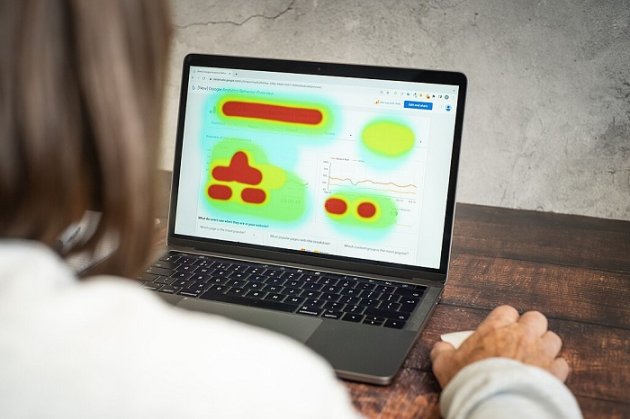In the evolving scenario, creating a website that attracts and retains visitors is a constant challenge for businesses. In pursuit of this goal, data-driven design has emerged as a powerful tool. Heat mapping is one of its most effective components, providing invaluable insights into user behavior and preferences. You can also use heatmap tools to visualize and analyze user interactions. This article explores how heat mapping influences website redesigns and contributes to a more user-friendly and engaging online experience.

Understanding Heat Mapping:
Before diving into its impact on website redesigns, it’s crucial to understand what heat mapping is. Heat mapping is a data visualization technique that uses color-coding to represent the intensity of user interactions on a webpage. The warmer colors like red and orange indicate areas with high user activity, while cooler colors like blue and green represent less activity.
Identifying User Behavior Patterns:
One of the primary ways heat mapping influences website redesigns is by helping designers identify user behavior patterns. By analyzing which webpage areas receive the most attention, designers can determine the most engaging content or features for visitors. This information allows them to strategically place important elements, such as calls to action or product listings, where they are more likely to catch the user’s eye.
Optimizing User Interface (UI) and User Experience (UX):
Heat mapping also plays a pivotal role in optimizing a website’s user interface (UI) and user experience (UX). By pinpointing areas where users are clicking or hovering their mouse, designers can identify potential pain points or areas of confusion. This insight enables them to make necessary adjustments, such as improving navigation menus, enhancing the clarity of buttons, or simplifying complex forms.
Improving Page Scroll Behavior:
Understanding how far users scroll down a webpage is essential for keeping them engaged. Heat maps provide a visual expression of where users tend to stop scrolling. This data helps designers decide where to place important content to increase visibility. By doing so, they can encourage users to explore more of the webpage and discover valuable information.
Enhancing Mobile Responsiveness:
In the mobile-driven world, ensuring a website is responsive on various devices is paramount. Heat mapping extends its usefulness to mobile design by revealing how users interact with a site on different screen sizes. Designers can use this data to make adjustments that improve the mobile experience, such as resizing or repositioning elements for optimal usability.
A/B Testing for Better Results:
Heat mapping is not a one-size-fits-all solution. It allows designers to conduct A/B testing, comparing distinct versions of a webpage to see which one performs better. By monitoring user interactions on both versions, designers can determine which design elements are more effective in achieving specific goals: increasing click-through rates, reducing bounce rates, or boosting conversion rates.
Reducing Bounce Rates:
High bounce rates are a common concern for website owners, as they indicate that visitors leave a site without engaging further. Heat mapping can help identify the reasons behind high bounce rates by revealing where users lose interest or become disengaged. With this information, designers can make changes to keep visitors on the site longer and encourage them to explore further.
Boosting Conversion Rates:
Ultimately, the primary goal of most websites is to convert visitors into customers or leads. Heat mapping can provide useful insights into the conversion process by highlighting which elements drive users to take desired actions. By optimizing these elements, such as forms or product pages, designers can increase conversion rates and, in turn, improve the website’s overall effectiveness.
Conclusion:
In website design, data-driven approaches are becoming increasingly crucial for success. Heat mapping offers designers a valuable tool to gain insights into user behavior, aiding them in making informed decisions about website redesigns. By identifying user behavior patterns, optimizing UI and UX, improving page scroll behavior, enhancing mobile responsiveness, conducting A/B testing, reducing bounce rates, and boosting conversion rates, heatmap tools can significantly impact the success of a website’s redesign efforts. In the competitive online environment, leveraging the capabilities of heat map analysis can make all the difference in creating a user-friendly and engaging website that successfully achieves its intended goals.
